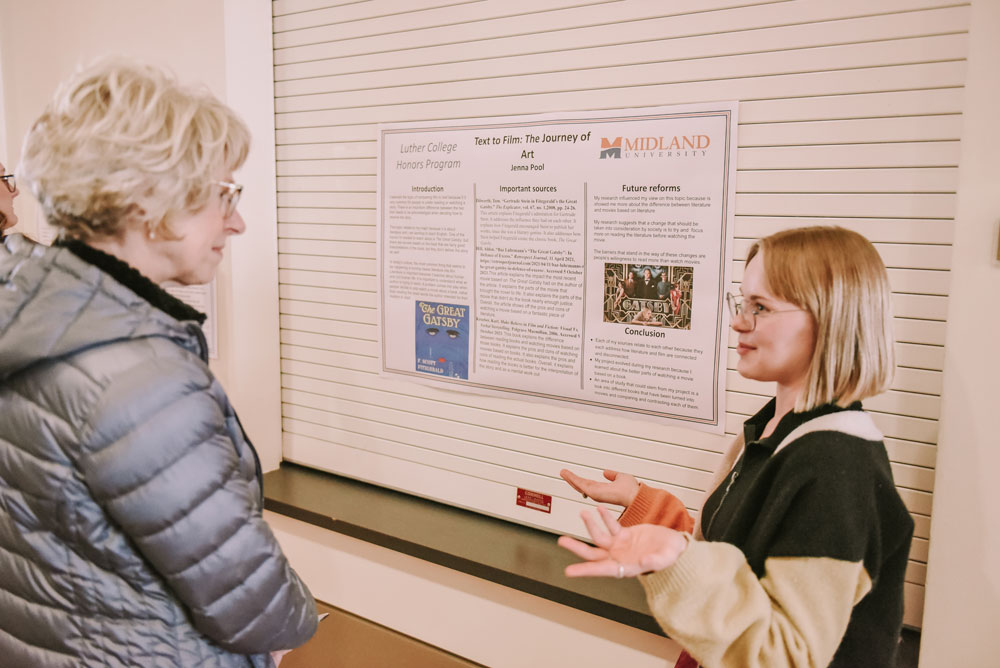
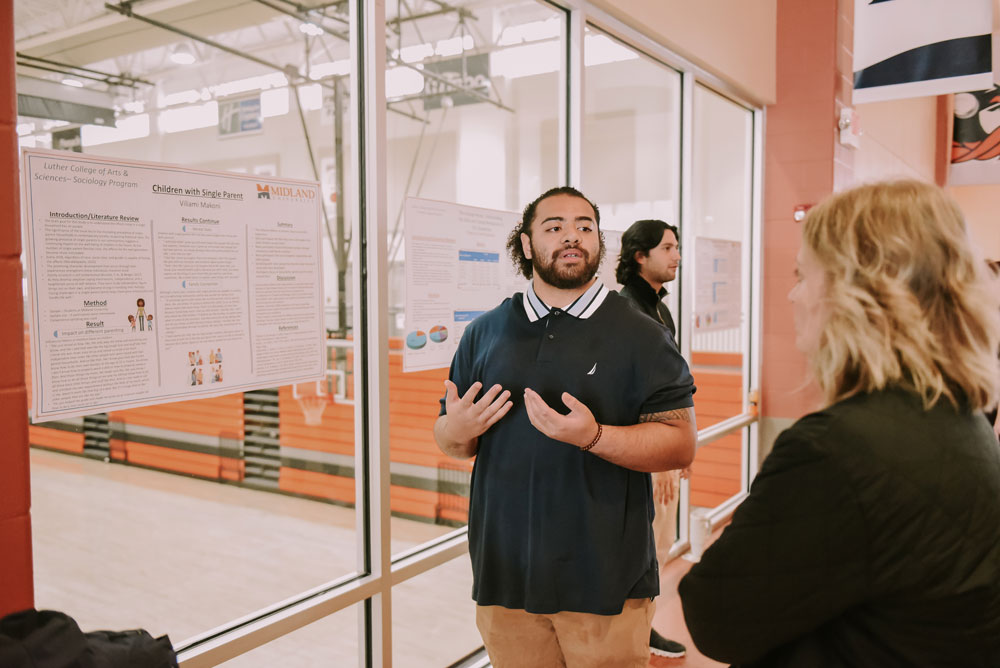
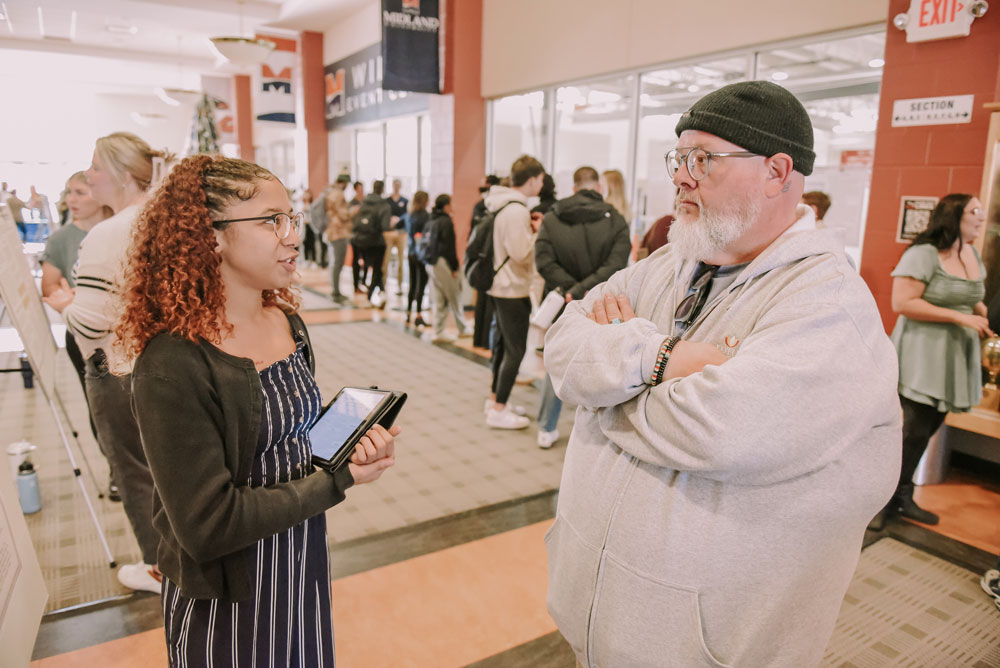
Midland University hosted its 2023 Fall Research Fair on December 1st at the Wikert Event Center.
There were 70 different research projects compiled by students through work they had done throughout the semester. For many students, these research projects serve as the capstone experience for their academic major, requiring them to apply skills they have developed throughout their time at Midland. For others, their projects involve putting academic knowledge into practice by going out into the community for enhanced experiences and reflection. Students presented their findings to judges during the event, and awards were presented in two different categories.
For Inquiry & Evidence-Based Research, the winners were Zoey Carrico and Jennifer Rascon, while second-place honors went to Chloe Dominger and Adriana Martinez.
In the Primary Data – Explanatory Research division, Victoria Cruz Cervantes was the winner, with Jacob Liquori taking second.
Midland will host its Spring Research Fair in April.
Learn more about all the projects on the Fall Research Fair page.
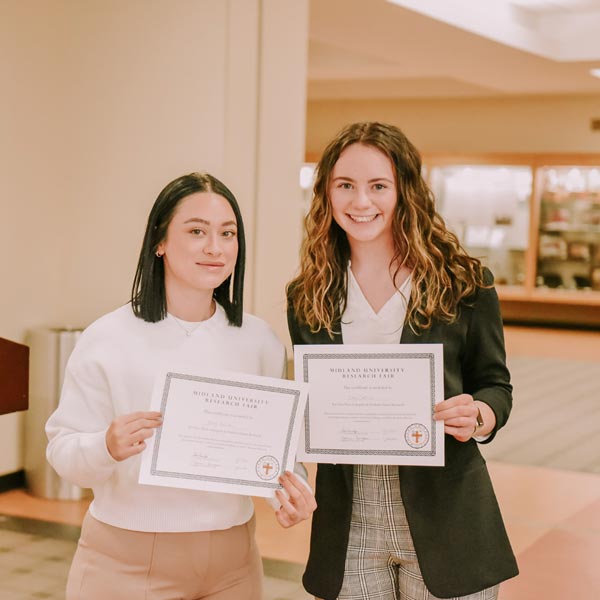
First Place Inquiry & Evidence-Based Research
Zoey Carrico and Jennifer Rascon
STEMI QI & Safety
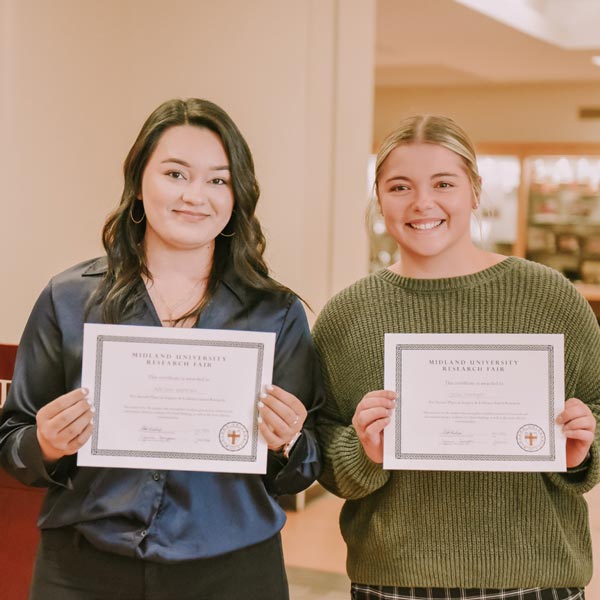
Second Place Inquiry & Evidence-Based Research
Chloe Dominger and Adriana Martinez
Interpretation Services
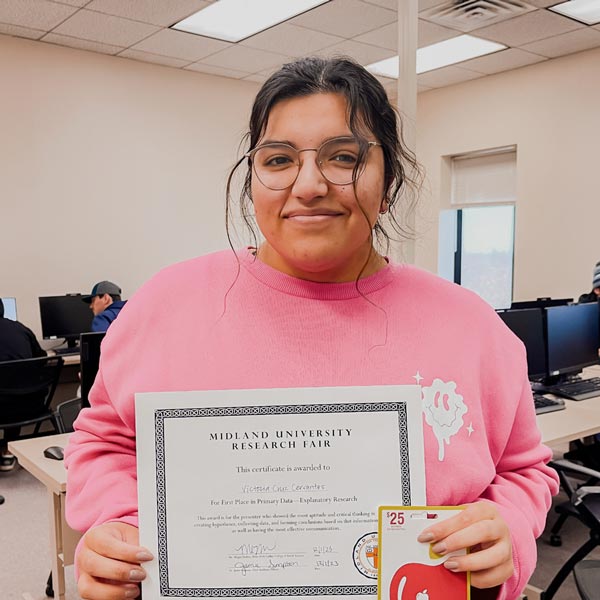
First Place Primary Data – Explanatory Research
Victoria Cruz Cervantes
The Buzz on Campus: An Analysis of Caffeine Intake among College Students
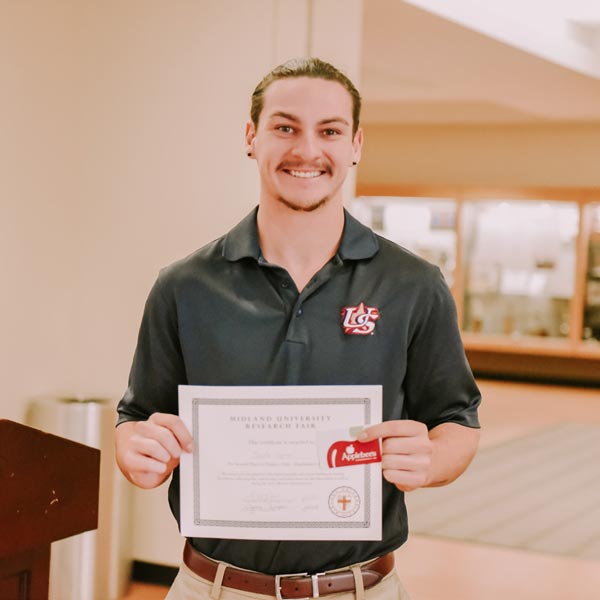
Second Place Primary Data – Explanatory Research
Jacob Liquori
Boost Your Gains the Natural Way: Unleashing the Power of a Healthy Lifestyle
